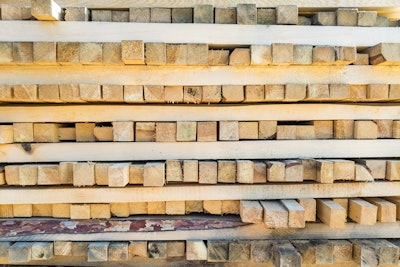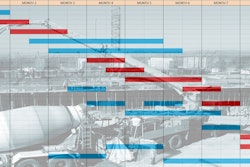
Materials procurement, which is the process by which construction materials are selected, ordered and delivered to a jobsite, is critical to the financial success of a project. Done well and correctly, it ensures steady access to even scarce supplies; the ability to submit and win bids with cost-certainty; and improved on-time project completion. In fact, a well-oiled materials procurement team can be a powerful partner to the trade contractor’s cost estimation team, helping win projects with general contractors while saving money and improving operations.
However, there are many procurement challenges today and recent price volatility has challenged these materials procurement teams to find new approaches to stay competitive. Enter predictive models — a new approach which has been used for years in other industries and is now making its way into construction through trade contractors. Predictive models work by analyzing a wide number of variables, including market data and past engagements with various suppliers, in order to equip buyers with predicted pricing before they even ask for quotes. Predictive models can be invaluable in helping trade contractors overcome a wide range of procurement challenges including:
Supply Chain Labor Shortages
According to LinkedIn data prepared for Bloomberg, from 2020 to 2021, the rate at which supply chain managers across industries left their jobs jumped by 28 percent, driven largely by the Great Resignation. Many supply chain and procurement operations have yet to replace these “missing heads” and are lacking sufficient procurement talent.
In the world of trade contractors, missing headcount translates to challenges in managing key supplier relationships. As staff are spread increasingly thin, procurement team members’ ability to proactively and strategically negotiate with suppliers degrades. Instead, they often work in reactive “panic buying” mode, trying desperately to gain access to needed materials and willing to pay any price. This dynamic can quickly lead to skyrocketing costs.
As noted above, predictive models work by cultivating insights and automatically equipping procurement teams with suggested pricing. This allows procurement professionals to avoid the toil and ambiguity often involved with determining the best price to offer. By sidestepping lengthy price approval and supplier negotiation processes, procurement team members can move much faster which compensates for the fact that there may be far fewer of them.
Intense Market Competition
When construction supplies are scarce (who can forget lumber from 2020 - 2021; drywall and adhesives in 2022 and the early 2023 shortage in cement), this, combined with insufficient headcount can create a recipe for disaster. With fewer people on the procurement team, it can take far too long to coordinate with individual suppliers, which translates to being at the “back” of many suppliers’ lines. By the time a procurement team member has received permission to offer a certain price for a supply, another construction company has likely swooped in and scooped up the materials. Another challenge we’re seeing often has to do with the transportation services needed to move supplies. So even when the procurement department is able to gain access to needed supplies, they often have difficulty transporting them from point A to point B.
With predictive models, procurement team members can propose prices quickly and more confidently, ensuring their place at the front of more suppliers’ lines, more often. Also, predictive models can flip the buyer-supplier power dynamic on its head, as suppliers can be made aware that they’re competing with one another and can thereby be incentivized to lower their prices or improve their terms. In this way, when suppliers compete, buyers win.
Pricing Volatility and Other Considerations
When there is a procurement labor shortage, intense market competition and high inflation, these factors create a perfect storm for ongoing fluctuation in construction supply pricing for many finished materials and commodities. It’s easy to see how trade contractors large and small can quickly find themselves at the mercy of suppliers, and at risk of substantially overpaying.
In any negotiation, research shows that the first price suggested, or “anchor” price, will serve as the reference point and the ultimate price agreed upon will not deviate far from it. This is a concept known as anchor bias. Predictive models ensure that procurement teams understand the landscape at any precise moment in time and won’t submit anchor bids that are wildly high (which would increase the likelihood that they will ultimately overpay).
While evaluating suppliers based on pricing is vitally important, it’s not the only consideration, and predictive modeling can also suggest the best supplier option at any moment in time based on other criteria or combination thereof, like quality, availability, order quantity and lead time. This approach is all about helping procurement teams select the best item at the right quality, quantity, time and price.
In conclusion, although construction is one of the world’s largest industries, it typically operates with very thin margins. In fact, overall industry profitability is expected to shrink in 2023. Materials procurement is a huge part of construction operational expenditures, or OpEx, typically accounting for between 40 to 70 percent of a construction company’s spending. Done well (or not), it can have a sizeable impact on the bottom line.
Advances in procurement processes in the construction industry overall will be the key to overcoming significant challenges including missing procurement headcounts as part of a continued overall construction industry work shortage; as well as continued supply scarcity and unpredictability in materials pricing. Longer term, a predictive approach to procurement powered by continuously learning artificial intelligence models (especially for fast-moving materials markets) can also help construction companies nourish and strengthen relationships with key industry partners, and that is most definitely a recipe for success.

















